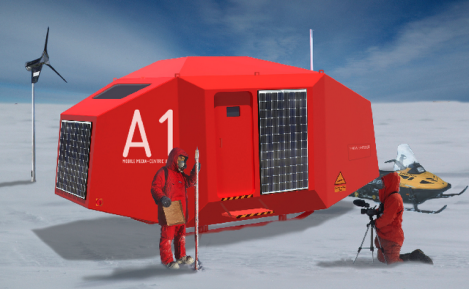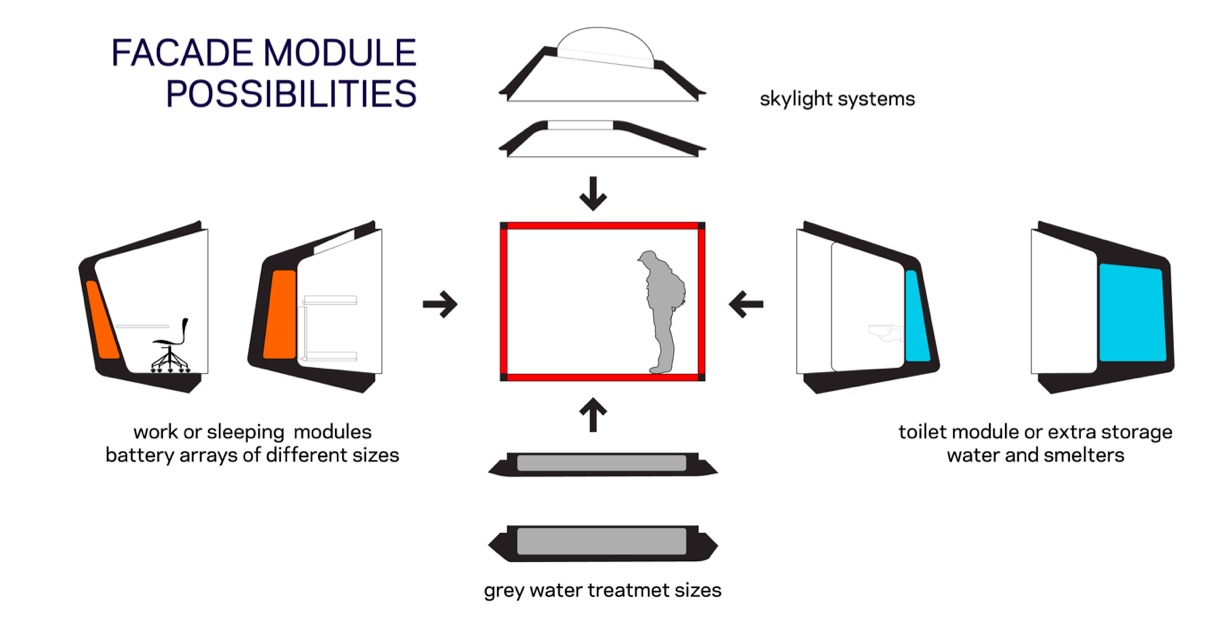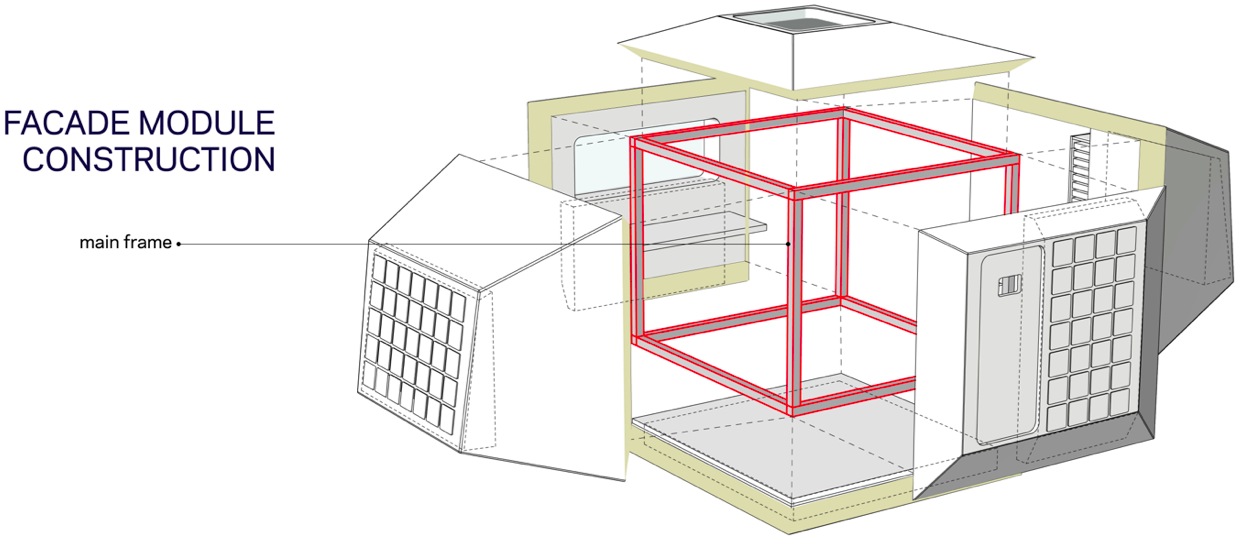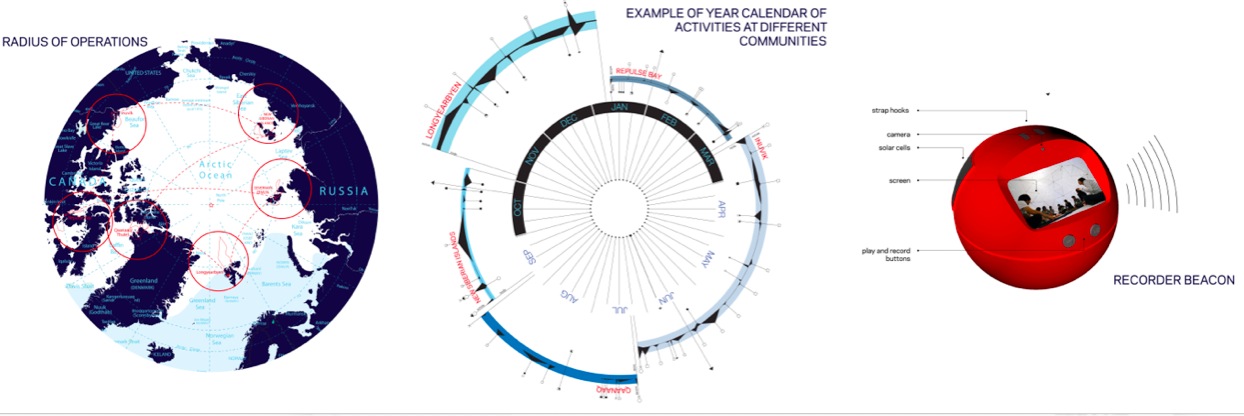
The research unit is designed around an aluminium rectangular frame (2.8 x 2.8 m and 2.3 m heigh), to which six “façade” elements are attached. These elements are tailored around the necessities for research and habitation in the interior, and shaped aerodynamically on the exterior, using this double shell system to incorporate insulation and house reservoirs. The suggested scenario shows 13.2 m2 unit, with a facade designed to incorporate sleeping units that transform into desks when folded, including a battery array with in the shell construction. Another façade incorporates toilet and shower with integrated snow smelter, which is filled from the exterior. A pantry and kitchenette façade module holds a galley. Technical shelves and communications are housed in the fourth façade module, which also incorporates a large window for natural light and first aid treatment. The central “roof” canopy has a skylight and the flooring module includes gray water treatment and storage. All these elements are exchangeable, interchangeable and replaceable, due to the fact that they all fit to the same rectangular frame and are removable independently. This allows the unit to be modernised in time, or modify its use to a more specific task. The unit is also designed to grow. By connecting to another unit of the same design, one can modify each unit to house different functions. One unit could concentrate habitation elements, creating a private sphere, and the other could be tailored for work and research activities, doubling the total floor space.
The modules that form each unit are made of an exterior and an interior glass fibre shell filled with insulating foam, creating a sandwich construction. Inside this thick insulating sandwich, different forms of polyurethane containers, which are easily accessible from the inside, hold the fresh and grey water reservoirs, snow smelting systems, which can be filled from the outside. Batteries are stored closed to the floor giving ballast and adding stability when the unit rests on snow, or in an emergency, while floating on water.
The over all outlines of the unit have been contoured to be as aerodynamic as possible while maintaining the maximum internal efficiency regarding availability and use of space. Great care has been taken in allowing for daylight through a generous skylight and windows. Vertical facades are covered with photovoltaic panels, exploiting the mainly horizontal sun rays of the arctic ( a potential surface of 25 m2), and together with a deployable wind turbine of 1800 mm diameter, the unit generates 6 Kwh.
The cultural “recording beacon” is an extension the mediatic unit. It is designed to stay within the cultural groups visited for a period of time, and to be fully controlled by the user. We propose this system as an anthropological mail service. The beacons are easy to operate and to carry and charge to mains or on the field, aided by solar cells. The aim is to create a network of cultural sharing, by recording and sending their everyday activities (see potential activity and route diagram) and emitting the video footage to the unit or other regions (or the net) with the push of a button.









